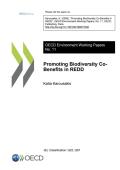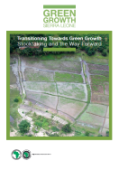
This report examines how biodiversity co-benefits in REDD (Reducing Emissions from Deforestation and Forest Degradation) can be enhanced, both at the design and implementation level. It discusses potential biodiversity implications of different REDD design options that have been put forward in the international climate change negotiations and proceeds by examining how the creation of additional biodiversity-specific incentives could be used to complement a REDD mechanism, so as to target biodiversity benefits directly.
This report is part of the United Nations Development Programme’s Global Environment Facility’s (UNDP-GEF) efforts to codify and share lessons learnt from how scarce public resources can be used to catalyse larger private financial flows for renewable energy. It provides an overview of UNDP-GEF projects in 14 developing countries which are supporting the development of national renewable energy policies based around feed-in tariffs and related instruments. In these activities UNDP-GEF assists developing countries to assess key risks and barriers to technology diffusion and then to identify a mix of policy and financial de-risking measures to remove these barriers and drive investment. This approach is illustrated through three case studies in Uruguay, Mauritius and Kazakhstan. The report finds that a key challenge for policy makers is to create the conditions to make renewable energy attractive to investors and utilities without jeopardising the attainment of other development goals.
This summary was prepared by Eldis.

This knowledge product is part of the work undertaken by the Bank in the context of its new Strategy 2013-2022, whose twin objectives are “inclusive and increasingly green growth”. Following a request from the Sierra Leonean authorities, this document was designed to assist government officials and national stakeholders to consider key challenges and identify major opportunities for mainstreaming inclusive green growth into the 2013–2018 Poverty Reduction Strategy Paper, known as the “Agenda for Prosperity”. The document has been prepared in consultation with the Sierra Leonean stakeholders. The main document is structured as follows: Section 1 outlines principles of green growth with relevance to the specific context of Sierra Leone. Section 2 outlines the main development opportunities and challenges of Sierra Leone, structured along the three green growth pillars the country has identified. Section 3 outlines institutional and policy challenges, as well as a possible framework for green growth. Section 4 summarizes development priorities identified in the A4P, and identifies green growth options in the A4P pillars.
This paper explores the value of green growth from the perspective of sustainable development practitioners. First, it provides a brief definition of green growth, and why the concept is relevant for meeting Africa’s challenges. It then discusses how green growth can be achieved, highlighting some of the primary tools for achieving it, and then discussing focal areas that we believe will have the greatest impacts by spurring growth sustainably. Finally, it discusses how the AfDB has promoted green growth through its own initiatives. Boxes throughout the paper provide examples of the AfDB’s promotion of green growth in its project portfolio.

